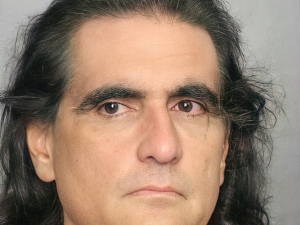SEOUL, South Korea (AP) — North Korea on Thursday reported 262,270 more cases of people with suspected symptoms of COVID-19 as its pandemic caseload neared 2 million — a week after the country acknowledged the outbreak and scrambled to slow the rate of infections despite a lack of health care resources.
The country is also trying to prevent its fragile economy from deteriorating, but the outbreak could be worse than officially reported because of scarce resources for virus testing and the possibility that North Korea could be deliberately underreporting deaths to soften the political impact on authoritarian leader Kim Jong Un.
North Korea’s anti-virus headquarters reported a single death in the 24 hours to 6 p.m. Wednesday to bring its death toll to 63, which experts have said is abnormally small compared to the suspected number of infections.
The official Korean Central News Agency reported that more than 1.98 million people have become sick with feverish symptoms since late April, which are mostly believed to be coronavirus omicron variant infections, although the country has only confirmed a small number of infection cases because of the scarcity of tests. At least 740,160 people are in quarantine, the news agency reported.
After maintaining a dubious claim that it had kept the virus out of the country for two and a half years, North Korea acknowledged its first COVID-19 infections last Thursday, saying that tests from an unspecified number of people in capital Pyongyang showed they were infected with the omicron variant.
Kim has called the outbreak a “great upheaval” and has imposed what the country described as maximum preventive measures that strictly restricted the movement of people and supplies between cities and regions.
Also read | ‘Higher risk of new variants’: WHO on Covid-19 outbreak in North Korea
He mobilized more than 1 million workers to find and quarantine people with fevers and other suspected COVID-19 symptoms. Thousands of troops were ordered to help transport medicine in the capital of Pyongyang.
State media images showed health workers in white and orange hazmat suits guarding the city’s closed-off streets, disinfecting buildings and streets and delivering food and other supplies to apartment blocks.
But large groups of workers continue to gather at farms, mining facilities, power stations and construction sites to spur production because Kim has demanded that economic goals must be met, the Korean Central News Agency reported.
Experts have said Kim cannot afford to bring the country to a standstill because that would unleash further shock on a broken economy damaged by mismanagement, crippling U.S.-led sanctions over his nuclear weapons ambitions and pandemic border closures.
The country faces an urgent push to protect crops amid an ongoing drought that hit the country during a crucial rice-planting season, a worrisome development in a country that has long suffered from food insecurity. North Korean state media also said that Kim’s trophy construction projects, including the building of 10,000 new houses in the town of Hwasong, are being “propelled as scheduled.”
“All sectors of the national economy are stepping up the production to the maximum while strictly observing the anti-epidemic steps taken by the party and the state,” Korean Central News Agency reported, referring to the travel restrictions and a virus controls at workplaces, including keeping workers separated in groups by their job classifications.
Also read | ‘A dismal litany of humanity’s failure’: Key points from UN 2021 climate report
The news agency added: “Units are quarantined reasonably at major construction sites in which the cherished desire of our party is coming into reality and at key industrial sectors including metal, chemical, electricity and coal industries. And construction and production are being steadily accelerated, with precedence given to the anti-epidemic work.”
Kee Park, a global health specialist at Harvard Medical School who has worked on health care projects in North Korea, said the country’s number of new cases should start to slow because of the strengthened preventive measures.
But it will be challenging for North Kore to provide treatment for the already large number of people with COVID-19 and deaths may possibly approach a scale of tens of thousands, considering the size of the country’s caseload, Park said.
It’s unclear whether North Korea’s admission of the outbreak communicates a willingness to receive outside help. The country has shunned millions of vaccine shots offered by the U.N.-backed COVAX distribution program, likely because of international monitoring requirements that are required to receive the vaccines.
Kim Tae-hyo, deputy national security adviser for South Korean President Yoon Suk Yeol, told reporters on Thursday that North Korea has ignored offers of help from South Korea and the U.S. to contain the outbreak.
Experts have said North Korea may be more willing to accept help from China, its main ally.






